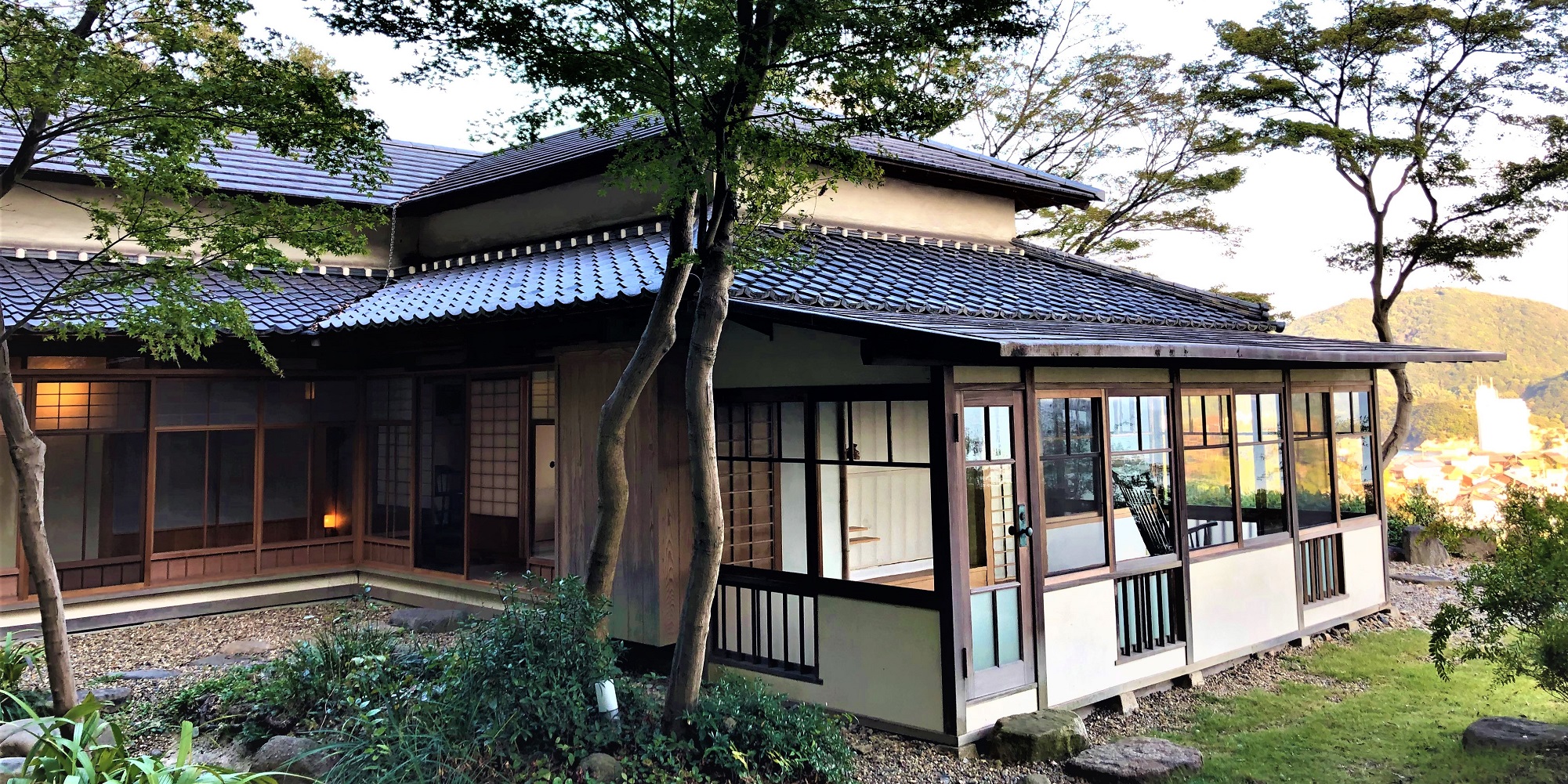
Villa Ushiroyama 后山山庄
by Koji FUJII / Keisuke MAEDA
Villa Ushiroyama is a house with an eventful history. Tucked away on a mountainside overlooking the picturesque port town of Tomonoura in Fukuyama, the building was originally designed by Japanese architect Fujii Koji (1888–1938). Fujii was born in Fukuyama and became famous for designing environmentally-friendly Japanese-style homes using a fusion of Japanese and Western techniques.
Fujii designed the villa as a mountain retreat for his older brother in the late 1920s. The house was thoroughly modern for its time, and showcased many of the same distinctive features Fujii developed building his own home, Chochikukyo, in Kyoto.
Unfortunately, the villa was abandoned after the war and by 2009 the house and surrounding garden were in a state of serious disrepair. The owner had planned to replace the house, but instead commissioned architect Maeda Keisuke, another Fukuyama native, to restore it. Although much of the house had to be replaced, the Villa Ushiroyama’s sunroom and distinctive double roof remained intact. Maeda completed the full restoration in 2013, combining contemporary architecture with traditional, while also remaining true to Fujii’s original design. The result is a harmonious fusion of styles which shows the craftsmanship of both men.
Maeda’s style, which aims to create buildings that have a reciprocal relationship with the environment around them, has a lot in common with Fujii’s. For example, the sunroom at the Villa Ushiroyama features a unique natural ventilation system, designed by Fujii and restored by Maeda. Sliding panels in the base of the walls allow cool air to filter in, while similar panels in the ceiling allow hot air to escape into an attic space, cooling the house further.
Large glass windows in the living room face east down the mountain, letting in plenty of sunlight as well as an expansive vista of Tomonoura. The glass is old and its wavy pattern lends an almost impressionistic edge to the view of the town. Between the living room and the windows is one of several ground-level corridors paved with stone, another way the Villa Ushiroyama brings the outdoors inside.
Although the Villa Ushiroyama is a private residence, it is open for visits on the second Sunday of the month by reservation.
后山山庄这栋建筑伫立于山腰之上,历史悠久,佳话逸事数不胜数。由此俯瞰,福山的港口城市——鞆之浦的明媚风光便一览无余。据说宫崎骏制作电影《悬崖上的金鱼姬》时,也曾在此停留数月。山庄最初由出生于日本福山的建筑师藤井厚二(1888-1938)设计,他以融合和洋建筑技术、设计环保型日式住宅而闻名。
20世纪20年代末,藤井为其兄长设计了后山山庄。这在当时是一栋极其前卫的建筑,再现了许多他在京都建造自宅“听竹居”时所开发的独到特征。
遗憾的是,后山山庄于战后被空置,至2009年,房屋及周围的庭园已破败不堪。房主原本打算重建房屋,但最终决定委托同为福山出身的另一位建筑师前田圭介(1974- )对其进行改造。房屋多处均被替换,但阳光间与独特的双层屋顶则保留完好。前田在忠于藤井原始设计的基础上,将现代建筑与传统建筑相融合,于2013年完成了全部修复工作。两位建筑师的巧妙匠心在一座建筑中得以协调搭配、完美结合。
前田的理念旨在设计与周围环境相辅相成的建筑,这与藤井的风格有诸多共通之处。如后山山庄阳光间独特的天然换气系统最初由藤井设计,之后则由前田改造。墙壁底部的推拉式壁板可纳入凉风,而天花板上同样的壁板则有利于热空气排出室外,使室内更加凉爽。
客厅的大玻璃窗面朝群山东侧,采光充足,更可远眺鞆之浦美景。古老的玻璃窗上饰有波浪形的花纹,城市景色经其渲染好似一幅印象派油画。山庄内有数条铺有石子、与地面等高的走廊,客厅与窗户之间的外廊正是其中之一,从而将室内外自然连结。
后山山庄虽是私宅,但通过提前预约,可在每月的第二个星期日前往参观。
DATA
Ushiroji Tomocho Fukuyamashi, Hiroshima
For your visit please check the website : http://ushiroyamasansou.com/ (Japanese)













